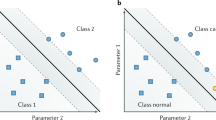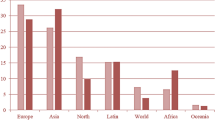Abstract
Clinical trials of PROBOT, a robotic system for prostate surgery, have shown that robotic surgery of soft tissue can be successful. Monitoring of the progress of the resection has shown to be a necessary feature of an effective robotic system for prostate surgery. It should provide the surgeon with a reliable method of assessing the cavity during resection. An automatic system for intraoperative monitoring of the progress of the resection during robotic prostatectomy consists of two subsystems: real-time intraoperative imaging of the prostate and automatic identification of the contour of the gland on each image. The development of a fully automatic scheme for prostate recognition on transurethral ultrasound scans is reported. A genetic algorithm has been developed to automatically adjust a model of the prostate boundary until an optimum fit to the prostate in a given image is obtained. An analysis of its performance on 22 different ultrasound images showed an average error of 6.21 mm. Use of a genetic algorithm and a constrained prostate model have shown to be a robust way to automatically identify the prostate in ultrasound images. The scheme is able to produce approximate prostate boundaries, without any human intervention, on ultrasound scans of varying quality. In addition to soft tissue robotic surgery, the genetic algorithm technique is also applicable to a wide range of computer assisted surgical techniques.
Similar content being viewed by others
References
Aarnik, R. G., Giesen, R. J. B., Huynen, A. L., De la Rosette, J. J. M. C. H., Debruyne, F. M. J., andWijkstra, H. (1994): ‘A practical clinical method for contour determination in ultrasonographic prostate images’,Ultrasound Med. Biol.,20, pp. 705–717
Altwein, J. E., andAlmer, F. (1994): ‘Is there a change in the treatment of BPH?’,Urol. Int.,52, pp. 1–3
Arámbula CoSio, F. (1997): ‘Towards a safe and effective robotic prostatectomy’, PhD Thesis, Dept. of Mech. Eng., Imperial College, London, UK
Baker, J. E. (1987): ‘Reducing bias and inefficiency in the selection algorithm’,Proc. 2nd Int. Conf. on Genetic Algorithms, Hillsdale, NJ, pp. 14–21
Cootes, T. F., Hill, A., Taylor, C. J., andHaslam, J. (1994): ‘Use of active shape models for locating structures in medical images’,Image Vision Comput.,12, pp. 355–365
Cootes, T. F., Taylor, C. J., Cooper, D. H., andGraham, J. (1995): ‘Active shape models-Their training and application’,Comput. Vision Image Understanding,61, pp. 38–59
Flury, B., andRiedwyl, H. (1993): ‘Multivariate statistics; a practical approach’ (Chapman and Hall, London)
Goldberg, D. E. (1989): ‘Genetic algorithms in search optimization and machine learning’ (Addision-Wesley, USA)
Grefenstette, J. J., andFitzpatrick, J. M. (1985): ‘Genetic search with approximate function evaluations’,Proceedings of an Int. Conf. on Genetic Algorithms and their Applications, pp. 112–120
Grefenstette, J. J. (1986): ‘Optimization of control parameters for genetic algorithms’,IEEE Trans. Systems Man Cybernetics,SMC-16, pp. 122–128
Hill, A., andTaylor, C. J. (1992): ‘Model-based image interpretation using genetic algorithms’,Image Vision Comput.,10, pp. 295–300
Hill, A., Cootes, T. F., Taylor, C. J., andLindley, K. (1994): ‘Medical image interpretation: a generic approach using deformable templates’,J. Med. Informatics,19, pp. 47–59
Liu, Y. J., Ng, W. S., Teo, M. Y., andLim, H. C. (1997): ‘Computerised prostate boundary estimation of ultrasound images using radial bas-relief method’,Med. Biol. Eng. Comput.,35, pp. 445–454
Madersbacher, S., Kratzik, C., Szabo, N., Susani, M., Vingers, L. andMarberger, M. (1993): ‘Tissue ablation in BPH with high intensity focused ultrasound’,Eur. Urol.,23, (suppl. 1), pp. 39–43
McCullogh, D. L., Roth, R. A., Babayan, R. K., Gordon, J. O., Reese, J. H., Crawford, E. D., Fuselier, H. A., Smith, J. A., Murchison, R. J., andKaye, K. W. (1993): ‘Transurethral ultrasound-guided laser-induced prostatectomy: National human cooperative study results’,J. Urol.,150, pp. 1606–1612
Prater, J. S., andRichard, W. D. (1992): ‘Segmenting ultrasound images of the prostate using neural networks’,Ultrasonic Imaging,14, pp. 159–185
Author information
Authors and Affiliations
Corresponding author
Rights and permissions
About this article
Cite this article
Arámbula Cosío, F., Davies, B.L. Automated prostate recognition: a key process for clinically effective robotic prostatectomy. Med. Biol. Eng. Comput. 37, 236–243 (1999). https://doi.org/10.1007/BF02513292
Received:
Accepted:
Issue Date:
DOI: https://doi.org/10.1007/BF02513292




